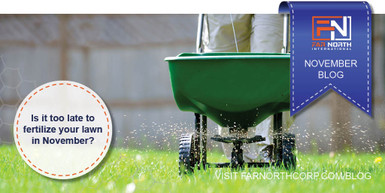Keep your lawn or garden healthy before it goes into a period of winter dormancy with an application of fertilizer in the late fall. This is the time when cool-season grasses recover from summer stresses, such as drought, heat, and disease and turfgrass can begin to store carbohydrate reserves. These carbohydrate reserves help grass resist winter injury and disease, as well as serve as a source of energy for root and shoot growth the following spring. Late-fall fertilization will also provide better winter color, enhanced spring green-up, and increased rooting. Feeding garden beds or vegetable gardens can also replenish soil that has been heavily depleted by growing plants over the season.
When to Fertilize
The exact timing on when to fertilize varies based on weather conditions and your climate zone; however, the final fertilizer application should be done sometime in November in most regions. This is the point when the grass has stopped growing or has slowed down to the point of not needing to be mowed. If fertilizer is applied too early while grass or garden plants are vigorously growing, it can invite winter injury and snow mold the following spring. However, do not wait until the ground freezes, and don’t apply fertilizer over snow or ice.
How to Fertilize
1.Figure Out How Much Fertilizer You Need
Nitrogen is the most important nutrient for a fall fertilizer. A recommended dose for lawns is 1 pound of soluble nitrogen for every 1,000 square feet or 1 1/2 to 2 pounds of slow-release nitrogen for every 1,000 square feet.
2.Choose the Right Mixture
A complete fertilizer with a high ratio of both nitrogen and potassium (K) is essential for enhanced rooting, cold hardiness, disease resistance, and wear tolerance.
3.Fertilize at the Right Time
For flower and vegetable gardens, a mild fertilizer feeding in the fall will replenish the soil and prepare it for a quicker green-up when planting begins the following spring. Gardens do better with this approach than with a heavy dose of fertilizer in the early spring.
4.Create a Fertilizing Schedule
It’s possible to over-fertilize your yard and garden. One late- to mid-summer feeding of a lawn, followed by a light fall feeding, produces a better lawn than the old recommendation for three or four major feedings for each growing season, as championed by fertilizer manufacturers.
Flower or vegetable gardens similarly can thrive with fewer fertilizer applications than once believed, especially if they are properly amended with compost and other natural organic materials. Most gardens do well with one feeding shortly after planting and one as the growing season concludes. However, plants that produce large quantities of vegetables or large, plentiful flowers may need more.
Are you are excited to have the house back this season? From organization projects, to DIY transformations, now is the time to get back to work on your home.
Get Started! Check out all of Far North International’s Wire Materials, Garden Products, Tools and more! Visit our website: https://farnorthcorp.com/

